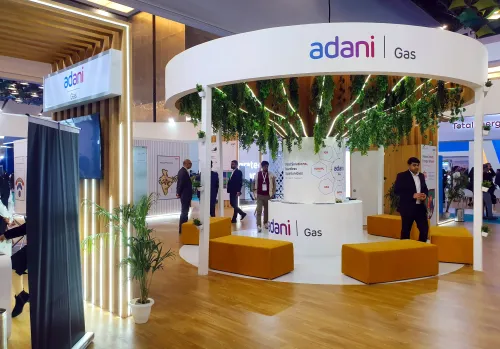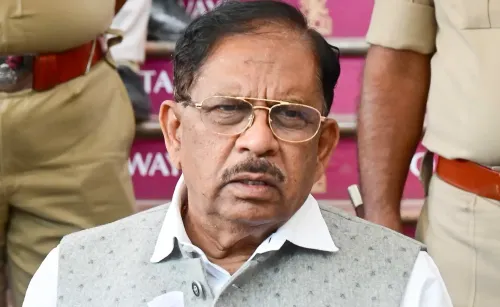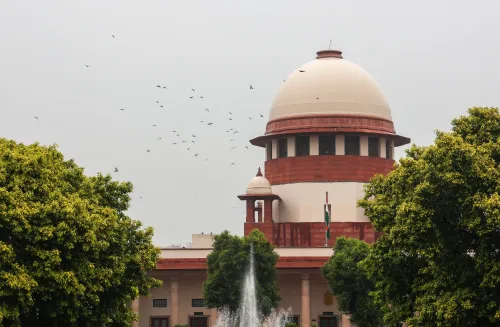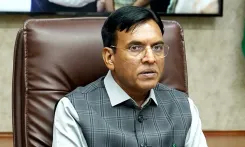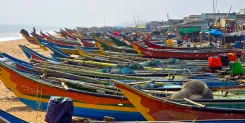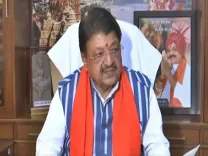Can MP CM Dr. Mohan Yadav Achieve 10 Million Hectares of Irrigation in 5 Years?
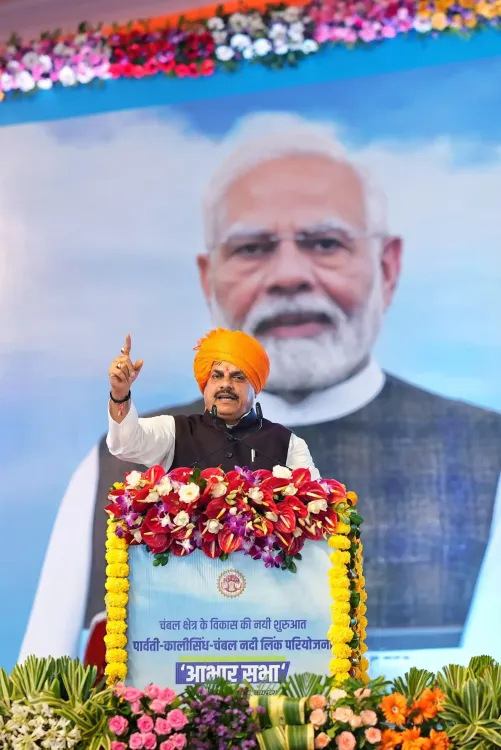
Synopsis
Key Takeaways
- 10 million hectares targeted for irrigation in five years.
- Expansion from 7 lakh to 55 lakh hectares of irrigation.
- Support for working women with Rs 14,000 monthly income.
- Increased financial assistance under Ladli Behna Yojana.
- Transformation of drought-prone regions into agricultural hubs.
Chachaura (Madhya Pradesh), July 25 (NationPress) The Chief Minister of Madhya Pradesh, Dr. Mohan Yadav, has set forth an ambitious goal to irrigate 10 million hectares within a span of five years.
During a public event held to express appreciation for the launch of the Parvati-Kalisindh-Chambal river-linking project, also referred to as the Kumbhraj Major Irrigation Project, Dr. Yadav highlighted that the BJP government has successfully increased the irrigation area from a mere 7 lakh hectares to 55 lakh hectares over the last two decades. He described this new project as a groundbreaking advancement in rural infrastructure and water security, emphasizing the state’s dedication to rejuvenating agriculture and fair distribution of resources.
In a striking contrast, he criticized the former Congress administration, stating, “While the Congress managed to provide irrigation to only 7 lakh hectares in 55 years, we have escalated it to 55 lakh hectares.” Additionally, he announced that working women in private sectors will receive Rs 14,000 monthly, with the state contributing Rs 6,000 and employers covering Rs 8,000.
Moreover, Dr. Yadav revealed that under the Ladli Behna Yojana, eligible women will receive Rs 1,500 monthly starting from the Bhai-Dooj festival, increasing to Rs 3,000 by 2028. He underscored this as a pivotal moment for the state's agricultural landscape. The project is expected to irrigate 6.14 lakh hectares and benefit 40 lakh residents across 13 districts, carrying symbolic significance.
Reflecting on a time when the Chambal region was marred by dacoit violence, the Chief Minister remarked that farmers previously had to safeguard their crops from theft, while trade was hindered by insecurity. “Today, farmers and traders can flourish without fear,” he stated, connecting irrigation development to enhanced law and order.
The core of this initiative is the Kumbhraj Major Irrigation Project, designed along the Parvati River in the Chachaura block of Guna district. This location, situated between Ghatakhedi and Chachoura villages, is reachable via NH-3, approximately 80 km from Rajgarh, 45 km from Guna, and 190 km from Bhopal. The Parvati River flows for 470 km before joining the Yamuna in Etawah, Uttar Pradesh, serving as a vital water source in the Chambal-Betwa basin.
Currently, irrigation in Rajgarh and Guna districts covers only 8.1 percent of the net cropped area. The region remains reliant on rainfall, resulting in low yields and ongoing poverty. With favorable physiographic conditions and untapped water flows, this project aims to provide year-round access to water for both domestic and agricultural needs. It seeks to transform a drought-prone area into a prosperous agricultural hub, offering stability to farmers historically dependent on unpredictable monsoons.

